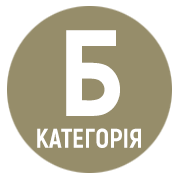DEVELOPING PSYCHOANALYSIS AND KEEPING IT ALIVE
DOI:
https://doi.org/10.32782/upj/2025-3-1-6Keywords:
holding, containment, psychoanalysis, war, online analysis.Abstract
Abstract. The Author emphasizes how the world is rapidly changing. In the last 50 years, there has been an increase in the number of psychotherapists and psychoanalysts all over the world. In a century, to a certain extent, psychoanalysis has adapted to different cultures and sociocultural environments, being fertilized also by culture and art. It deals with the extreme complexity (and consequent richness) of the human psyche. Psychoanalysis must develop between the analyst and the patient a living relationship, which is nourished by many essential ingredients, such as good training and a reliable setting, and carefully managed in front of new challenges, like online sessions. Psychoanalysts may find appropriate nourishment only connected to what Bolognini calls the Fourth Pillar, the institutionally organized group of colleagues, associated within Psychoanalytical Societies. Tatjana Pushkareva, in her work, thinks that every analyst should stay in contact with the richness of his own as well as others’ cultures, to enrich the capacity to “find emotions, thoughts, and words to tell it”. Humans need an authentic contact with mental contents of other minds and groups. Culture may play a role in the care and attribution of meaning to traumatic experiences. Individuals need other individuals and groups to be contained and helped to process what is too heavy for individual minds to hold. Even groups need brilliant minds – such as those of poets and scientists – who assume and interpret what is hidden in the darkness. Culture has a sort of maternal-psychoanalytic role: holding and containment.
References
Bolognini, S. (2019). Enchantments and Disenchantments in the Formation and use of Psychoanalytic Theories about Psychic Reality. The Italian Psychoanalytic Annual.
Brodskij, I. (1980). Conversations. Jackson, University Press of Mississippi. It. transl. Conversazioni, Adelphi, Milano, 2015.
Florenskij, P. (1922). In: Attualità della parola. La lingua tra scienza e mito. Guerini, Milano, 1989.
Fonda, P. (2021). Все еще аналитический сеттинг… и новые рубежи психоанализа. Conference of the Ukrainian Psychoanalytic Society, Kiev, 11th September 2021.
Freud, S. (1921). Group Psychology and the Analysis of the Ego. SE XVIII. P. 123.
Gallese, V., Morelli, U. (2024). Cosa significa essere umani? Raffaello Cortina, Milano, 2024.
Hobsbawm, E. (1994). Age of Extremes. The Short Twentieth Century 1914–1991. Pantheons Books-Random House, Inc. 1994.
Ogden, T. (1989). The Primitive Edge of Experience. Jason Aronson Inc., 1989
Ogden, T. (2009). Rediscovering Psychoanalysis. Thinking and Dreaming, Learning and Forgetting. Routledge, East Sussex. 2009.
Pamuk, O. (2008). The Museum of Innocence [original title: Masumiyet Müzesi]. Alfred A. Knopf, New York, 2009.
Pushkareva, T. (2019). Ruined Lives: Some Considerations on the Motherhood and Femininity in the Period of Repressions in the Soviet Union, paper presented at The Feminine, 51th Congress IPA, London, 24th – 27th July 2019.
Sandler, J. (1983). Reflections on Some Relations Between Psychoanalytic Concepts and Psychoanalytic Practice. Int. J. Psycho-Anal, 64, 35–45.



